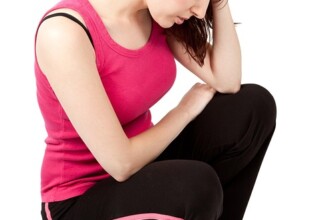Transform Your Home: The Benefits of Embracing Chemical-Free Cleaning Solutions
In today's world, maintaining a clean and healthy home is more critical than ever. However, traditional cleaning solutions often contain a mix of harmful chemicals that can impact both our health and the environment. As we become more mindful of what we bring into our living spaces, the movement towards chemical-free cleaning solutions is gaining significant traction. This article delves into the many benefits of these eco-friendly alternatives, guiding you on how to transform your home into a sanctuary free of harsh chemicals.
1. Understanding Chemical-Free Cleaning Solutions
Chemical-free cleaning solutions refer to products made from natural ingredients that do not include synthetic chemicals or toxins. These cleaning agents often employ biodegradable components, are environmentally friendly, and offer similar cleaning efficacy to traditional options. Common ingredients in chemical-free cleaning solutions include:
- Vinegar: Excellent for disinfection and deodorizing.
- Baking Soda: A natural abrasive that can buff surfaces clean.
- Lemon Juice: Acts as a natural bleach and disinfectant.
- Essential Oils: Provide pleasant scents and can have antibacterial properties.
2. Health Benefits of Chemical-Free Cleaning
One of the most compelling reasons to adopt chemical-free cleaning is the positive impact on health. Conventional cleaning products can release harmful fumes or contain allergens that exacerbate respiratory conditions or skin irritations.
2.1 Reducing Allergens and Respiratory Issues
Studies have indicated that households using chemical-free products report fewer allergy symptoms and asthma attacks. Many traditional cleaners contain irritants that can worsen pre-existing respiratory conditions.
2.2 Avoiding Toxic Exposure
By embracing natural cleaning solutions, families can significantly reduce their exposure to toxic substances often found in conventional cleaning products. For example, a study published in the journal Environmental Health Perspectives shows links between indoor air quality and cleaning products, emphasizing the benefits of chemical-free alternatives.
3. Environmental Advantages
Another significant benefit of switching to chemical-free cleaning solutions is the positive impact on the environment. Unlike their conventional counterparts, chemical-free products are often biodegradable and non-toxic, making them safer for aquatic life and ecosystems.
3.1 Reducing Chemical Waste
Traditional cleaning products contribute to a large volume of harmful waste that ends up in landfills. Chemical-free solutions, on the other hand, utilize natural ingredients that break down without leaving hazardous residues.
3.2 Protecting Water Sources
Many chemicals in conventional cleaners find their way into waterways, leading to contamination. By using chemical-free products, you can help reduce water pollution and protect local ecosystems.
4. Cost-Effectiveness of Chemical-Free Cleaning Solutions
Adopting chemical-free cleaning solutions can also be a financially wise decision. Many of the essential ingredients, such as vinegar, baking soda, and lemon, are inexpensive and often already available in your kitchen.
4.1 DIY Cleaning Solutions
Creating your own cleaning products can cut down on costs significantly. For instance, a simple all-purpose cleaner can be made with just water, vinegar, and a few drops of essential oil, helping to reduce your cleaning budget. Not only does this save money, but it also allows full control over what goes into your products.
4.2 Long-Term Savings
Investing in durable, chemical-free products can lead to long-term savings versus regularly purchasing disposable chemical-laden products. Chemical-free options tend to be concentrated and last longer, providing better value.
5. Case Studies: Real-Life Transformations
Transitioning to chemical-free cleaning solutions has made a significant difference for many households. Here are a couple of examples:
5.1 The Jones Family
After realizing that their children were frequently suffering from respiratory issues, the Jones family decided to make a complete switch to chemical-free cleaning. They began using vinegar and baking soda for most surfaces. Within a few months, they noticed a marked improvement in their children’s health, significantly reducing asthma attacks and allergy symptoms.
5.2 Community Initiative in Greenfield
A community in Greenfield initiated a project to promote chemical-free cleaning in households. Workshops were held to educate families on creating DIY cleaners. Over a year, the community reported improved air quality and a reduction in cleaning-related health issues, illustrating the broader impacts of such initiatives.
6. Tips for Transitioning to Chemical-Free Cleaning
Making the switch to chemical-free cleaning doesn’t have to be overwhelming. Here are some practical tips to help you transition:
- Start Slowly: Begin by replacing one or two products at a time. Gradually phase out your conventional cleaners for chemical-free alternatives.
- Research Effective Recipes: Learn about effective DIY cleaning recipes that fit your needs.
- Involve Your Family: Involve all family members in the transition process; this can make cleaning activities more engaging and informative.
- Label Your Solutions: Clearly label homemade cleaners to avoid confusion.
- Seek Feedback: Monitor how the changes affect your health and home cleanliness.
7. Frequently Asked Questions (FAQ)
Q1: Are natural cleaning products as effective as chemical ones?
A: Yes! Many natural ingredients have excellent cleaning properties, often matching or surpassing those of chemical alternatives.
Q2: Can I still disinfect my surfaces with chemical-free solutions?
A: Absolutely! Solutions like vinegar, hydrogen peroxide, and tea tree oil have natural disinfectant properties.
Q3: How can I ensure my homemade cleaners are safe and effective?
A: Research the properties of each ingredient and follow reliable recipes to ensure safety and efficacy.
Q4: Are chemical-free products suitable for all surfaces?
A: Most chemical-free cleaning solutions can be used on various surfaces, but it's wise to test in a small area first to avoid damage.
8. Resources
| Source | Description | Link |
|---|---|---|
| Environmental Protection Agency | Guidelines on eco-friendly cleaning supplies and methods. | EPA Website |
| Non-Toxic Kids | A resource for safe cleaning products and DIY recipes for families. | Non-Toxic Kids |
| Good Housekeeping | Articles and tips on effective cleaning with natural ingredients. | Good Housekeeping |
| The Green Home | Information on sustainable living and chemical-free cleaning. | The Green Home |
Conclusion
The benefits of adopting chemical-free cleaning solutions are clear—from improving health to being environmentally friendly and cost-effective. As more families recognize these advantages, the trend towards eco-friendly cleaning is likely to continue growing. By embracing these solutions, you not only create a cleaner home environment but also contribute to the well-being of the planet.
Future trends may include increased availability of chemical-free products in stores, more community initiatives promoting natural cleaning, and ongoing research into the effectiveness and safety of various natural cleaning solutions. Engaging in conscious cleaning practices is a significant step towards sustainability.
Disclaimer
This article is intended for informational purposes only and should not be considered medical or legal advice. Always consult with qualified professionals regarding cleaning practices and health recommendations. While we strive for accurate and up-to-date information, we make no guarantees regarding the efficacy of the cleaning solutions discussed.










